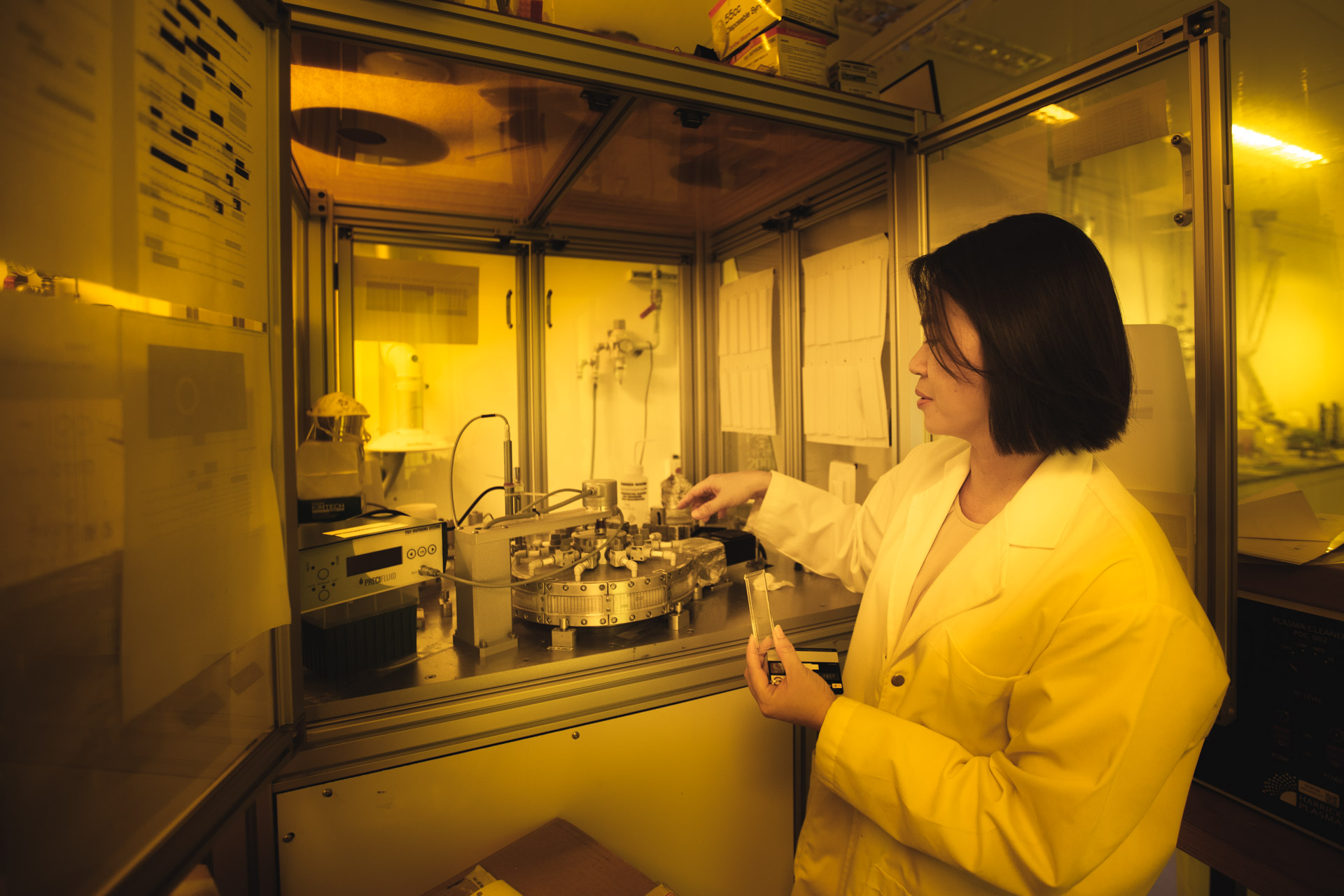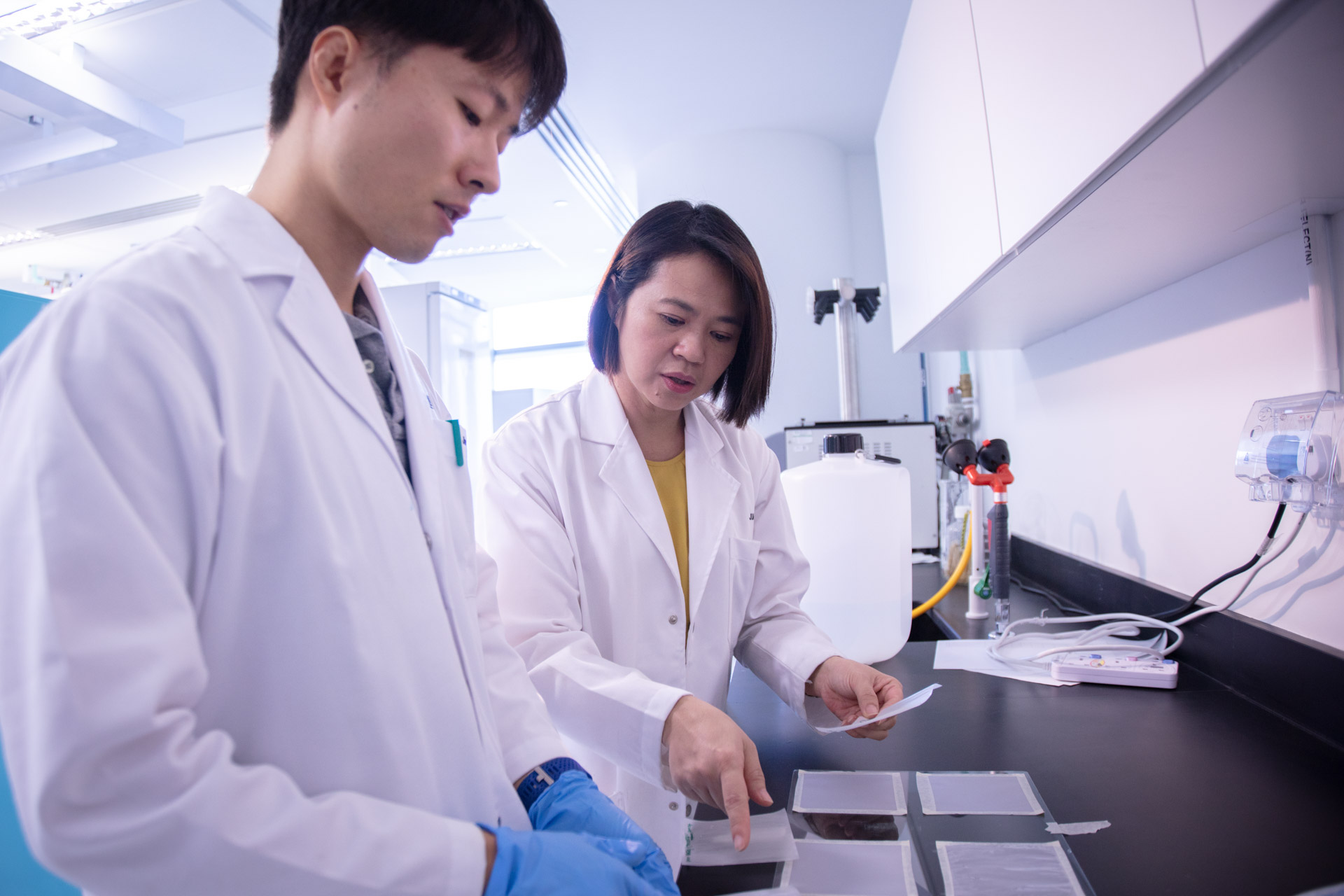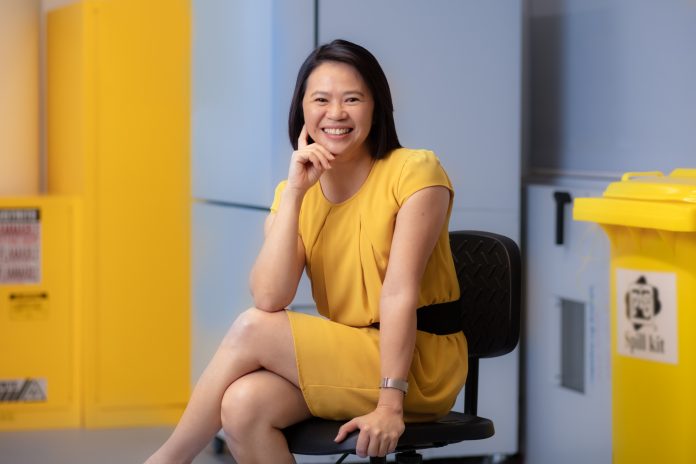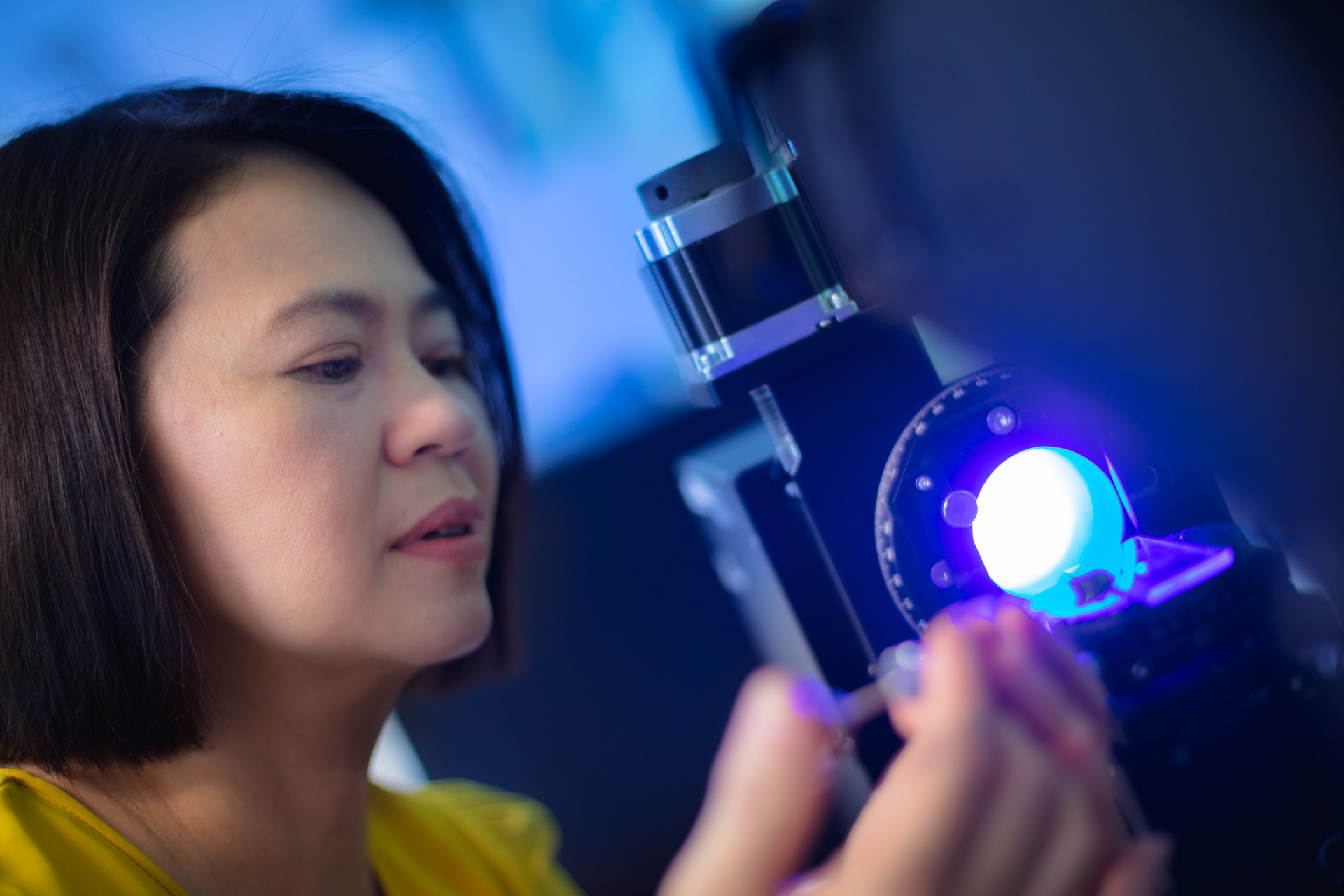Professor Low Hong Yee shows us the building blocks of our tactile world and why she thinks mother nature still knows best. The nanoworld is intriguing. A curious peek through the microscope sends you tumbling down the rabbit hole into an alien world of bizarre landscapes. Some of them are mushroom-like. Some are like polka dots. Others are pleasant-looking – like those that look adorably like rolling hills.
The nanoworld is intriguing. A curious peek through the microscope sends you tumbling down the rabbit hole into an alien world of bizarre landscapes. Some of them are mushroom-like. Some are like polka dots. Others are pleasant-looking – like those that look adorably like rolling hills.
“These are what we call nanotopography,” a voice looms from above, interrupting our microscopic tour of the alien terrain, “variations in shapes and sizes of these nanoscopic structures give rise to unique surface textures we see in nature.”
We spun around to an amiable smile from Prof Low Hong Yee, associate professor at the pillar of Engineering Product Development (EPD). Donned in a cheerful shade of yellow, the convivial material scientist exudes a welcoming sense of warmth in an otherwise cold and sterile lab.
Prof Low’s Tactile World
“Material science and engineering is a very broad topic,” Prof Low begins as we settled in front of a whirring machine. “If you look around our physical world, everything – every physical thing we touch – comes from materials,” she defines, “and that’s fundamentally where material is.”
Prof Low’s research in this massive material world concentrates, however, on the littlest of them all – nanofabrication and nanotechnology. What she does specifically, is the design, engineering and fabrication of surface textures onto existing polymeric materials – textures inspired by the natural world.
Prof Low on the goniometer – an instrument used to measure the wettability of surface textures
“We call this biomimicry,” says Prof Low, “it literally means mimicking or copying biology.” A commonly cited example is the self-cleaning effect of the lotus leaf. “The bumpy texture on the leaf creates a superhydrophobic environment that compels water droplets to roll off with exceptional ease, taking any dirt or mud along with it,” she illustrates, “that’s how it gets its self-cleaning property.”
There are currently several ways to emulate this self-cleaning feature of the lotus leaf (chemicals, laser cuts, vibrations), but Prof Low is only interested in one – to replicate its texture. “One of the underlying interests of our research is to create textures without the use of chemicals. Instead, we do so by mimicking and translating unique surface topographies found in the biological world onto synthetic materials.”
But that’s not an easy task. Think of it as having to produce a 3D-printed organic structure that’s highly complex and varying in shapes and sizes. If that’s not challenging enough, it has to happen at a nanoscopic scale. That’s 1×10-9m, or one billionth of a metre in length. No machine is versatile and precise enough to handle jobs at such minute scale and complexity. That is, until Prof Low and her team managed to crack it.
A Little Bit of History
It all happened about 15 years ago when Prof Low was a nanofabrication researcher at A*STAR’s Institute of Mechanical Research and Engineering. Back then, she worked with a machine called the nanoimprint lithography machine. Manufacturers use it to emboss two-dimensional patterns onto semiconductor devices like diodes and transistors in the semiconductor industry.
“Lithography is one of the key driving technologies in the industry,” says Prof Low, “but it was used in a very rigid way. So I asked myself, ‘what if I can use it to make three-dimensional structures?’” And she did. Which only sparked more questions such as, “How can I make these structures useful?”
The Birth of Nanoimprint Technology

It was ironically a biology paper that provided the answer. “It was a report on the biological structures of rice leaves,” Prof Low recalls, “I looked at it and said, ‘Hey, this is texture. This texture is complex, with both micro- and nanoscale structures on it. The technique we’ve been developing could potentially be used to recreate them.”
And that was the aha moment – the moment that prompted the materialisation of nanoimprint technology. She never looked back since. “There is a quote from Steve Jobs that I really like,” the forward-thinking researcher continues, “it’s about connecting the dots, the dots from very different disciplines. That’s kind of how it all started for me.”
Nanoimprint Technology at Work

Today, Prof Low and her team are able to successfully fabricate many biomimetic textures onto plastic materials – from the intricate patterns of butterfly wings (to create radiant colours without the use of chemical dyes) to the anti-reflective nature of a moth’s eye to, of course, wettability of the well-loved lotus leaf.
One application that’s perhaps closer to many of our hearts, is the antibacterial property that biomimetic textures could potentially provide.
A new bacterial revolution.
Chemicals are traditionally used in the antimicrobial industry to eliminate bacteria in a process known as bactericide. Bacteria, however, are hardy survivors. They evolve and become resistant to the chemicals we use, disabling our defence against them.
That’s when anti-fowling textures become important. Anti-fowling refers to a surface’s ability to prevent bacteria, slime and other microbial organisms from accumulating. The surface of a shark’s skin is perfect for that function.

“Textures don’t kill bacteria. They make them uncomfortable,” Prof Low illustrates, “bacteria need to anchor themselves onto a surface before they can proliferate and grow. But if the surface is uncomfortable for them, it’ll discourage them from doing so.”
And it works. Results from initial tests reveal a lesser amount of bacteria colonising on shark skin-inspired films compared to those on controlled surfaces when placed in a hospital environment. “This is a very promising result. Eventually, we hope to be able to get around bacteria’s ability to develop resistance to chemicals and move away from the mainstream method of fighting bacteria.”
The spirit of collaboration.
Prof Low’s career in nanotechnology is no doubt a prolific one. A quick search on the Internet will yield numerous links to publications, citations and patents bearing her name. We can’t help but wonder (out loud); how does she keep up?
“I’d say it’s collaboration,” the professor responds with a laugh, “most researchers will agree with me on that. You can’t do everything by yourself. If you look at my publications, I’ve collaborated all over the place (laughs). It’s a good way to expand the research spectrum.”
SUTD itself, according to Prof Low, is also an excellent incubator for collaboration. “It’s inherent throughout the organisation structure,” she explains, “take EPD for example. Sitting right across me, is a chemist. Next to me, an electrical engineer. A few doors down, there’s a humanities professor. We get to talk to people from different disciplines on a daily basis. Collaboration, as a result, takes place more naturally.”
One texture, multiple applications.
In fact, she’s already working with Professor Mohan whom we also interviewed previously to put a gecko-inspired dry adhesive on their climbing robots. “Dry adhesive is essentially sticky tape without the glue. Gecko feet, with their very distinct nanoscale structures, are the best role models in this domain.”
This unique chemical-free texture-based adhesive also attracted attention from practitioners in the biomedical industry. So other than climbing robots, the team is now working with a US-based medical firm to apply the adhesive to surgical tapes as well. “That’s the beauty of collaboration. It allows our work to take on a very different meaning even though it’s the same texture we’re talking about.”
Material science and our everyday lives.
A couple of years ago, Prof Low gave an inspiring TEDx talk and a particular scenario she offered got stuck in our heads. There, she held up a tube of facial cream and said, “Just like getting ketchup out of the bottle, we usually try to get every bit out of this bottle as well.”
We’ve got to agree. Getting contents, be it ketchup or facial cream, out of a tube or bottle is a perennial first-world frustration. Good news is, Prof Low and her team are working on it. One day, she will find a way to replace the insides of the tube with, perhaps, a lotus leaf-like biomimetic texture. And that may just, finally, solve this quotidian problem of ours.
This is only a small preview to how her research is going to impact our tactile world in the future. Change is imminent. And we, too, are waiting.
Like what you just read?
Rewatch our talks and join our post-Open House programmes on our Open House website!
Also, our undergraduate programme applications are open!
Find out more about our admission requirements and application details here.

































